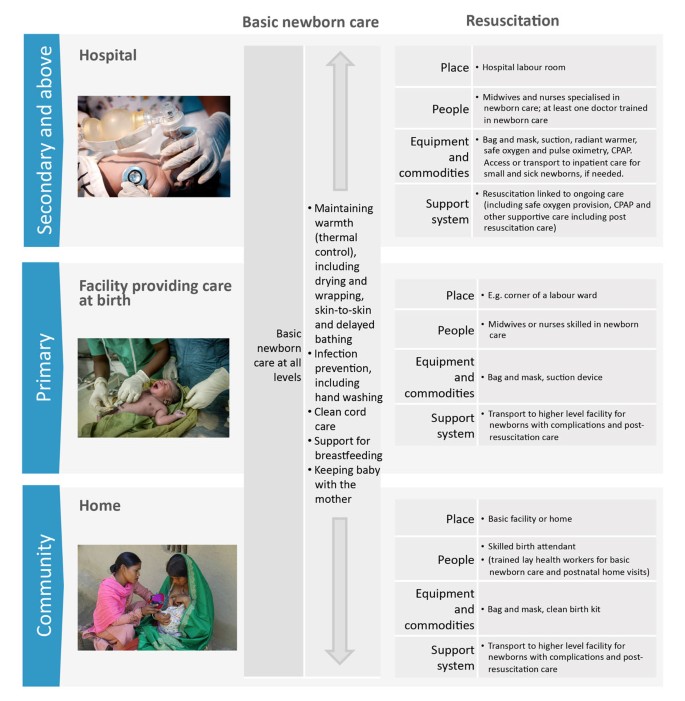

Starting IVF routinely confers several disadvantages because having an IV line in place is painful and stressful, and disrupts the natural birthing process by hindering the woman’s freedom of movement in labor. One study evaluated the probable risk of maternal aspiration mortality to be in the extremely low range of approximately 7 in 10 million births. However, researchers including Goer in 2007 have questioned the need for IVs in all women in labor since life-threatening emergencies are very rare in low-risk women. Intravenous (IV) therapy has been used routinely to hydrate women who were restricted from eating and drinking and to provide quick access in case of an emergency. Since we know that close interactions between the mother and baby during the immediate postpartum period is beneficial, these events should not lead us to reconsider skin-to-skin contact but instead make us focus on prevention efforts that include more vigilant monitoring of a skin-to-skin infant left alone with its mother during these hours, and helping parents and caregivers provide safer sleep environments. With the introduction of EINC as a new protocol, it is very easy to fall into the trap of blaming the program for any untoward incidents that occur while it is being introduced. Events seem often related to a potentially asphyxiating position while the parents may be too fatigued or otherwise are not able to assess their infant's condition correctly, consistent with the potential risk factors for ALTE identified in the Dageville study, namely skin-to-skin contact, a first-time mother and mother and baby alone in the delivery room. Another sub-group of sudden, unexpected infant deaths is caused by accidental suffocation and strangulation in bed (ASSB) which is a leading category of injury-related infant deaths. A similar study by Poets done in Germany in 2010 on unexpected sudden infant deaths (SID) and severe apparent life-threatening events (S-ALTE) that occurred within 24 hours of birth yielded an incidence of 0.026 in 1000 live births. A 2008 study by Dageville done in Provence, France on 62,968 presumably healthy term neonates showed an overall rate of neonatal apparent life-threatening events and unexpected deaths of 0.0 live births. A neonatal apparent life-threatening event (ALTE) or sudden unexpected death during the first 2 hours of life is rare.
#What is essential intrapartum newborn care skin
Across the 11 Scale-up EINC Project sites, the incidence of falls has not increased.Ī : There is no evidence that skin to skin contact alone puts a newborn at risk of sudden deterioration due to possible suffocation.

Other project sites in the EINC scale-up project have innovated with their own sling designs for this purpose. In response to this finding, EAMC’s EINC Working Group designed a sling or salumbata so that the risk of falling will be significantly reduced and reorganized their staff for mother-infant dyad monitoring and education. The most frequent circumstance of an infant falling on the floor occurred when a mother, seated on a chair, falls asleep while breastfeeding her infant. Data from the East Avenue Medical Center from 2008 to 2010, a period before EINC Program implementation, showed that the local incidence of falls ranged from 4.9-11.7/10,000 live births. After studying the circumstances surrounding the incidents, preliminary recommendations made by a committee to reduce newborn falls included monitoring mothers more closely, improving equipment safety (such as reducing gaps between hospital bed railings, or between the mattress and the guard rails integrating the bassinet into the design of the maternal bed so that it can be attached alongside it) and increasing awareness about newborn falls.

In multicenter studies done in the United States, the incidence of in-hospital neonatal falls was estimated at 1.6-4.14/10,000 live births. A: Falls may occur most especially in the period following delivery but what needs to be emphasized is that we should institute measures aimed at eliminating or monitoring the most common circumstances under which these falls occur.


 0 kommentar(er)
0 kommentar(er)
